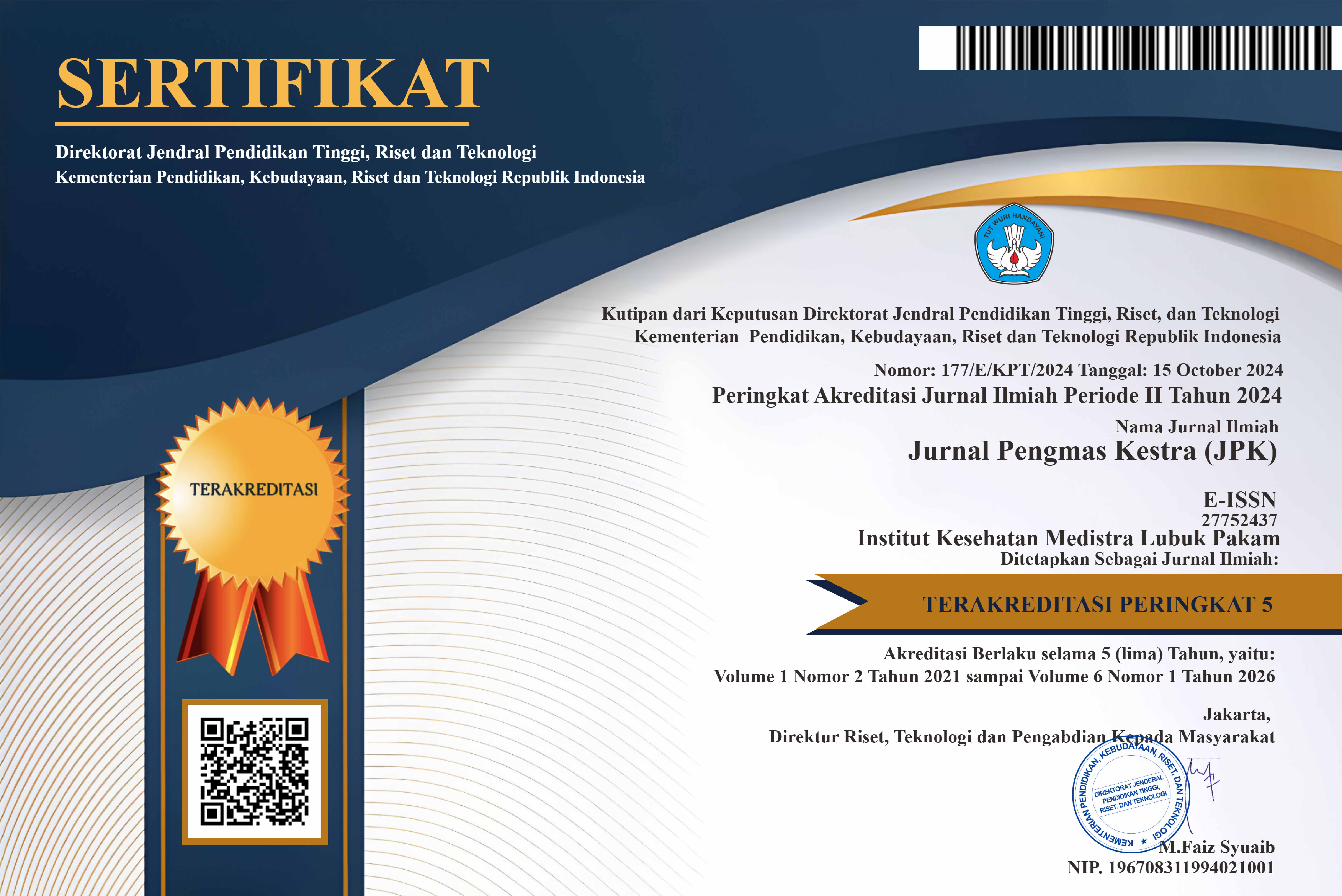Implementation of Medical Record Application for Patient Registration Data Management at Pagar Jati Health Center
DOI:
https://doi.org/10.35451/jpk.v4i1.2183Keywords:
Application, Medical Records, Management, PatientsAbstract
advancement in health services that help improve the quality of health systems worldwide, including Indonesia. Electronic Medical Records (EMR) applications have been useful for improving the efficiency and quality of health services in the health industry. The use of medical applications is a global trend, and electronic medical records are believed to be able to improve the quality of health information services. Improving access and quality of patient services is very important for health organizations such as health centers, so data management is an important solution in improving efficiency. The development of the Medical Record Application at Pagar Jati School is a high priority initiative that aims to provide a system that is capable of handling patient data. Based on the findings of the health center accreditation process in 2016, the service of raw materials, both in-hospital and out-of-hospital raw materials, has been implemented in accordance with the health center supply management standards. The use of information systems is encouraged to improve efficiency. This includes documentation of patient symptoms and the speed of treatment delivery, as well as the accuracy of information obtained from patient registration to initial treatment. To ensure that all anticipated goals and outcomes are achieved, direct monitoring and support will be used in the final stage to evaluate each step of the work process. The Medical Record Application is expected to increase the efficiency of administrative data processing in terms of speed and accuracy of the data produced as well as reduce operational costs, minimizing the possibility of data loss and damage.
References
Abda’u, Prih D., Wing Wahyu Winarno, And Henderi Henderi. 2018. ‘Evaluasi Penerapan SIMRS Menggunakan Metode HOT-Fit Di RSUD Dr. Soedirman Kebumen’. INTENSIF: Jurnal Ilmiah Penelitian Dan Penerapan Teknologi Sistem Informasi 2(1):46.
Bratha, W. G. E. (2022). Literature Review Komponen Sistem Informasi Manajemen: Software, Database Dan Brainware. Jurnal Ekonomi Manajemen Sistem Informasi, 3(3), 344–360.
Djati, S. P. (2023). Manajemen Strategis Dalam Pelayanan Kesehatan Masyarakat. Indonesia Emas Group.
Hidayat, T., & Hadi, A. F. (2023). Sistem Informasi Rekam Medis Dan Penjualan Obat. Jurnal Teknik dan Teknologi Tepat Guna, 2(1), 53-63.
Hapsari, D. A., Andriani, R., & Igiany, P. D. (2023). Analisis Kesiapan Implementasi Rekam Medis Elektronik Menggunakan Instrumen CAFP (California Academy of Family Physicians) di Puskesmas Kartasura. Jurnal Ilmiah Perekam Dan Informasi Kesehatan Imelda (JIPIKI), 8(2), 242-252.
Indriani, A. A., Ratnawati, R., & Wanita, F. (2019). Aplikasi Reminder Pengontrolan Perawatan Gigi Berbasis Android. Inspiration: Jurnal Teknologi Informasi Dan Komunikasi, 9(1), 59-68.
KEMENKES RI. Peraturan Menteri Kesehatan Republik Indonesia Nomor 24 Tahun 2022 Tentang Rekam Medis.
Pratama, A. A. F., Putri, L. L. A., Anita, A., Rahmasari, H., & Sisko, M. (2024). Gambaran Penggunaan Aplikasi Rekam Medis Elektronik Pasien di Salah Satu Pukesmas Kota Batam. COMSERVA: Jurnal Penelitian dan Pengabdian Masyarakat, 3(09), 3773-3780.
Prio, A., Lathifah, A., & Indriyanah, A. (2022). Literature Review Sistem Informasi Manajemen: Software, Database Dan Brainware. Jurnal Ekonomi Manajemen Sistem Informasi, 3(4), 442–451.
Yudarmawan, R. Arif. 2020. ‘Perancangan User Interface dan User Experience SIMRS pada Bagian Layanan’.
Downloads
Published
Issue
Section
License
Copyright (c) 2024 Darmanto Ginting, Rini Armaida Purba, Raisha Octavariny

This work is licensed under a Creative Commons Attribution 4.0 International License.
Copyright in each article is the property of the Author.




















